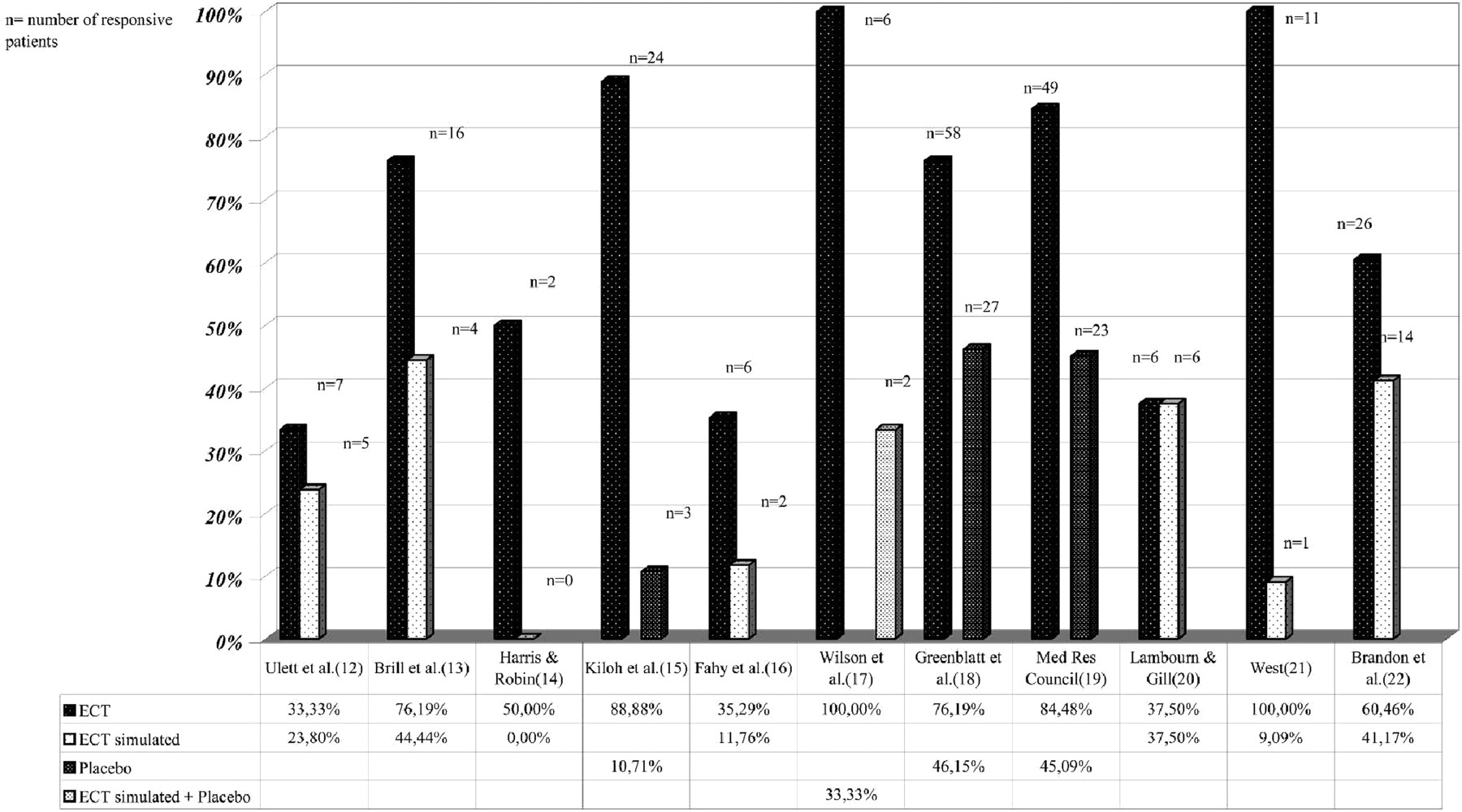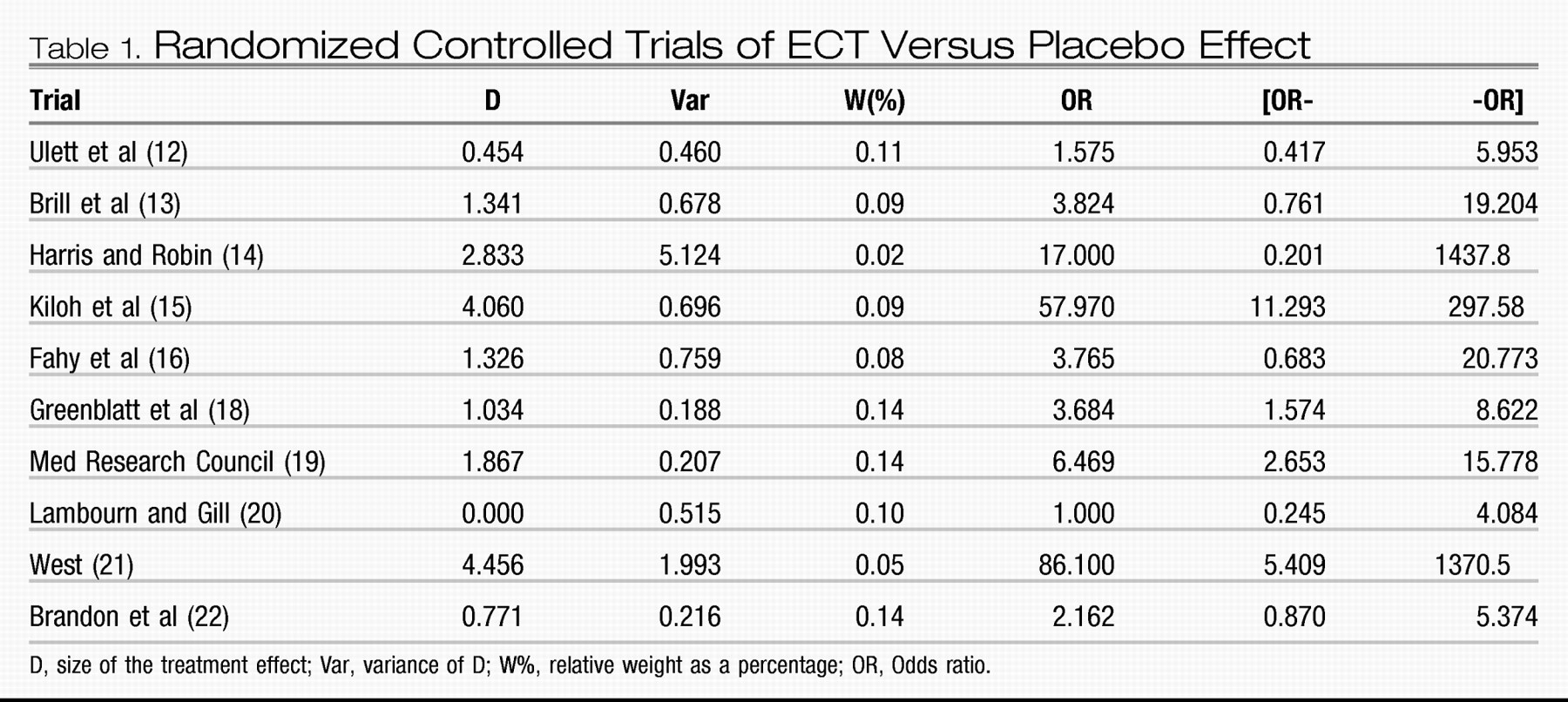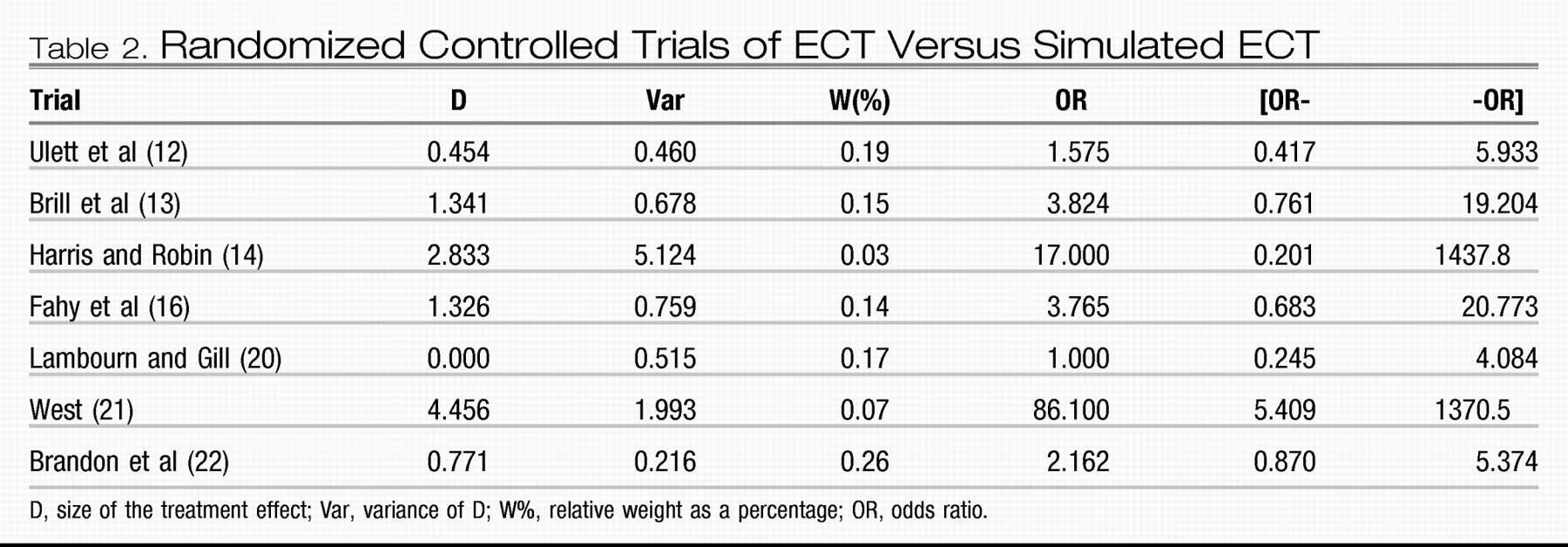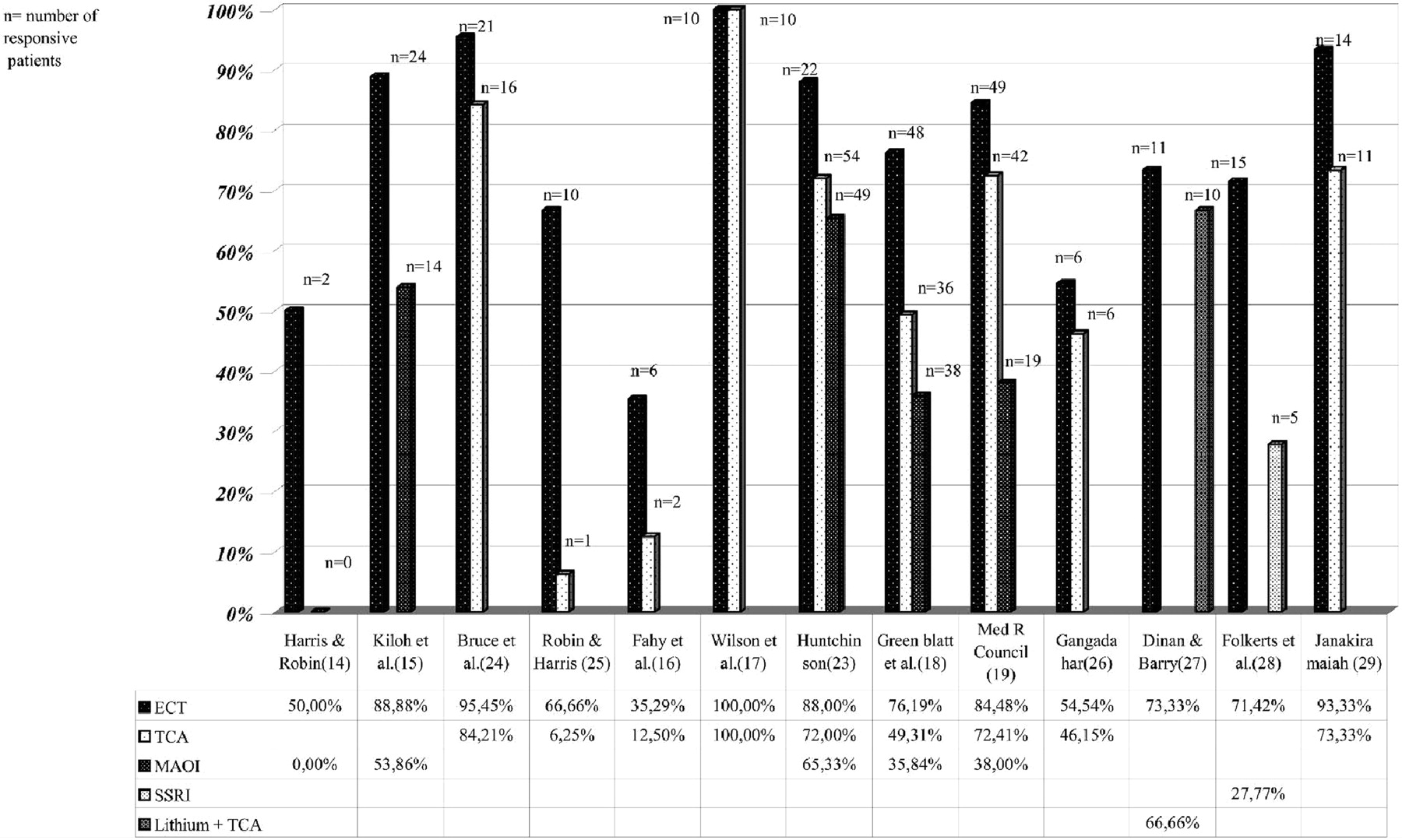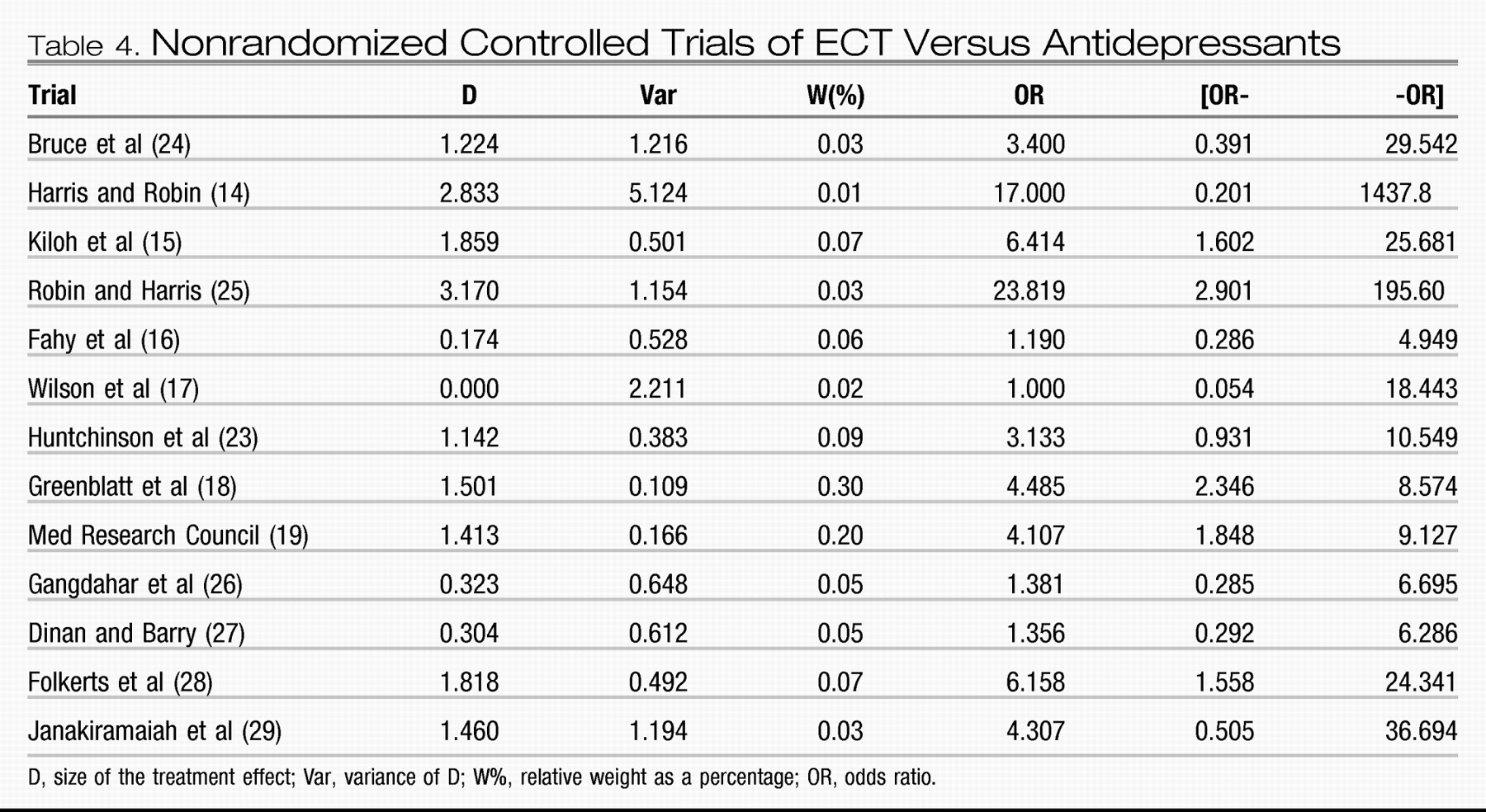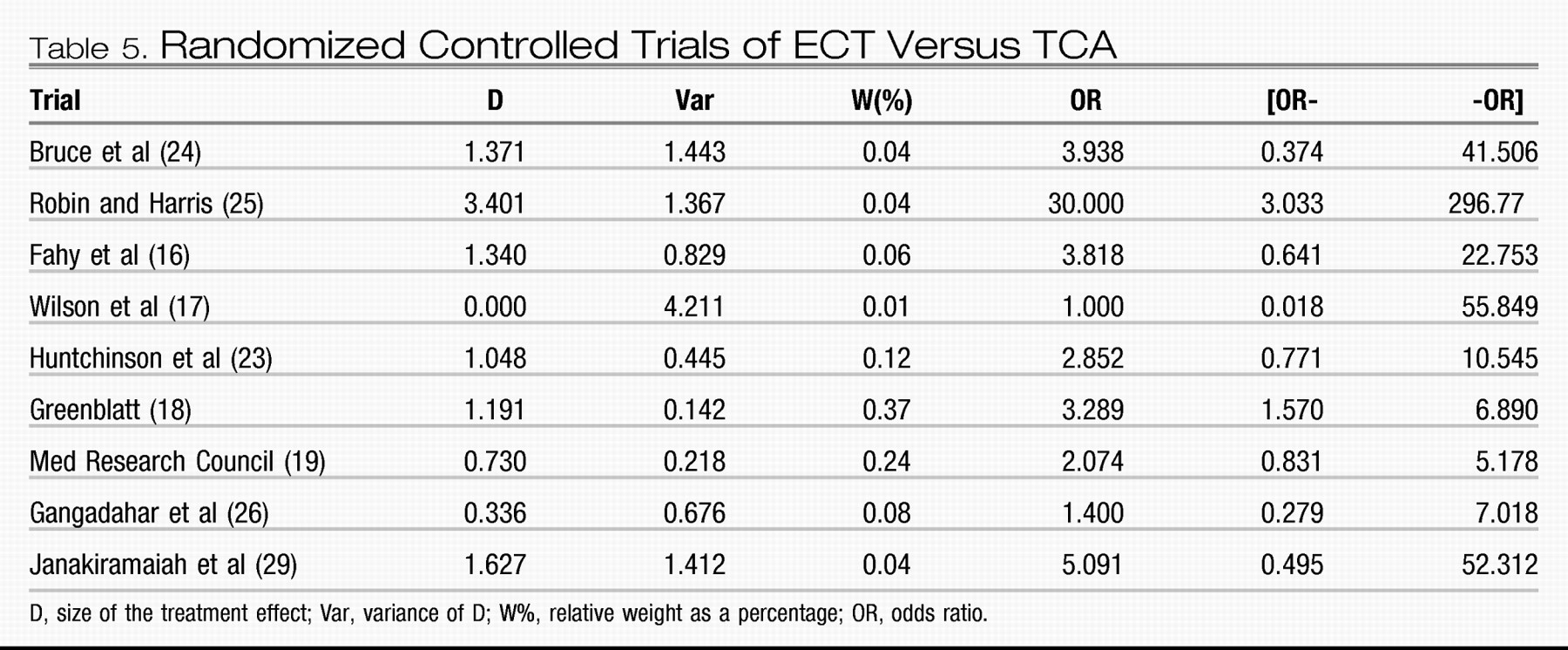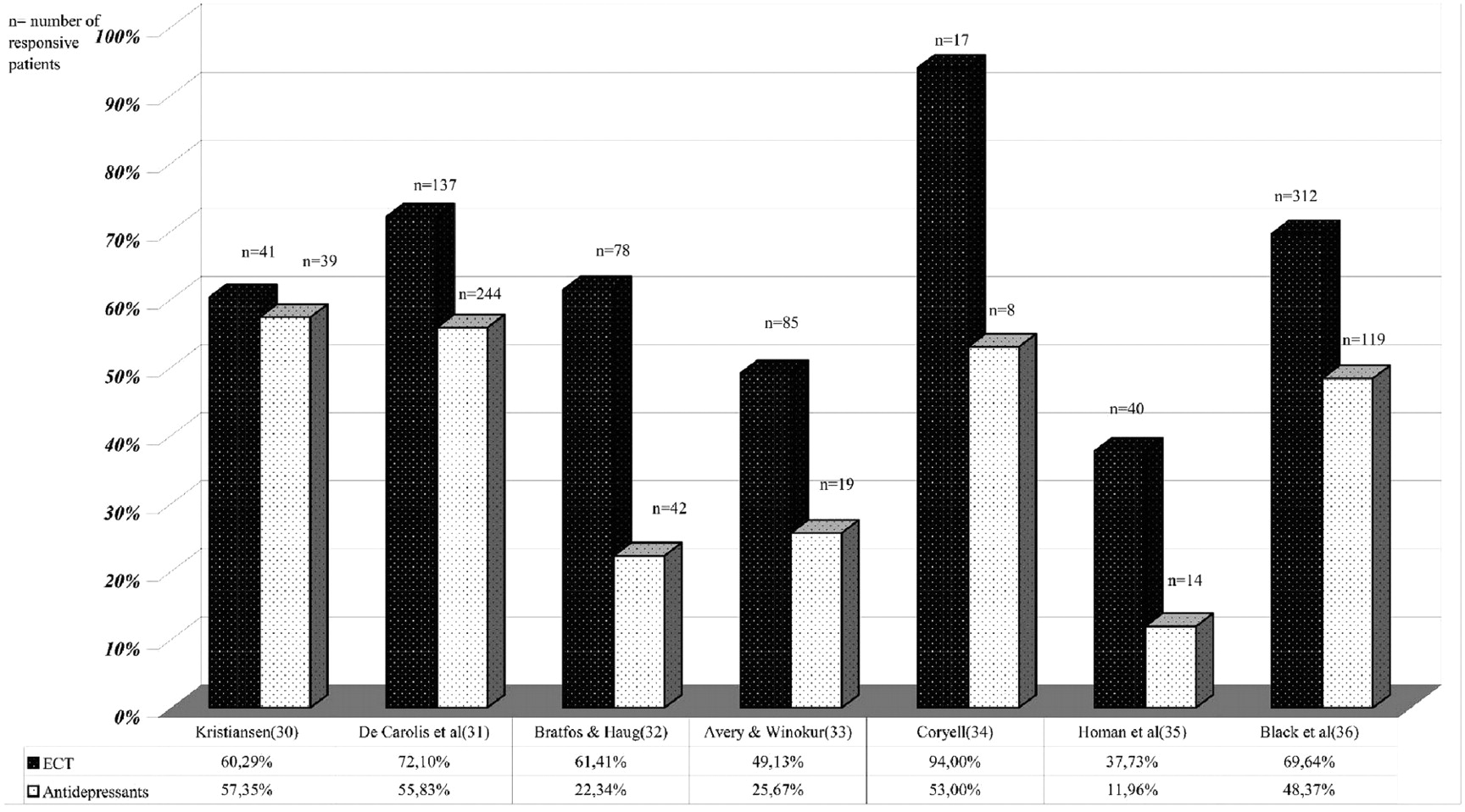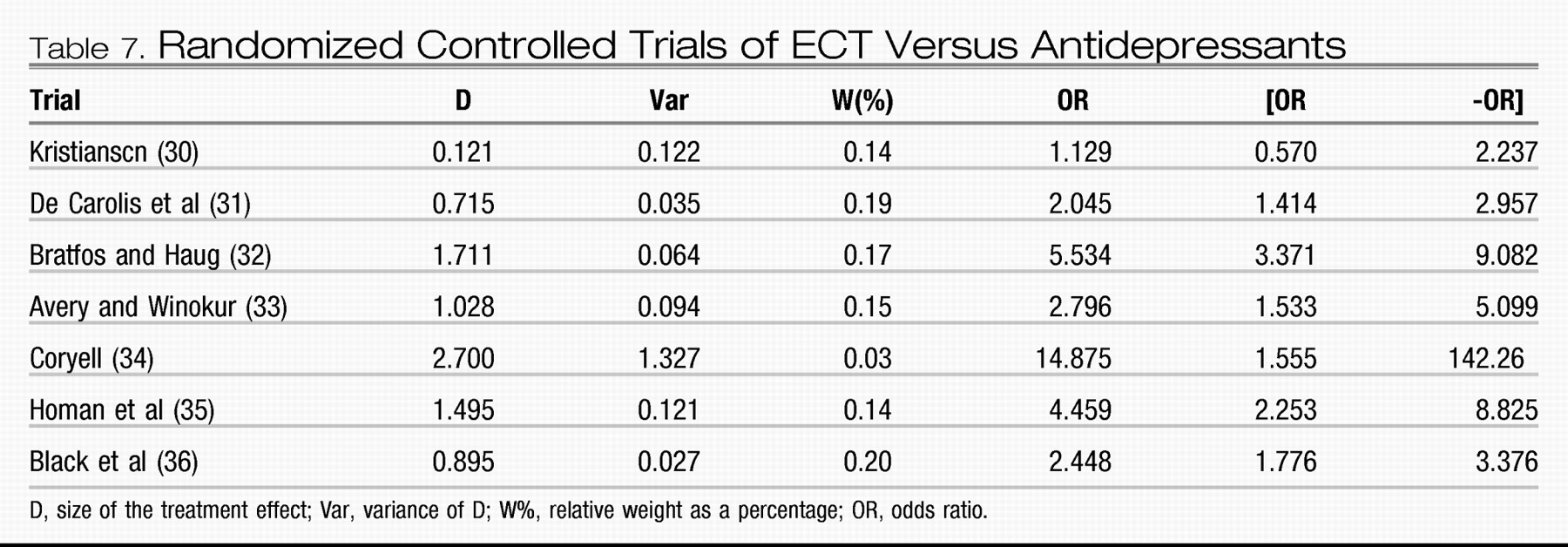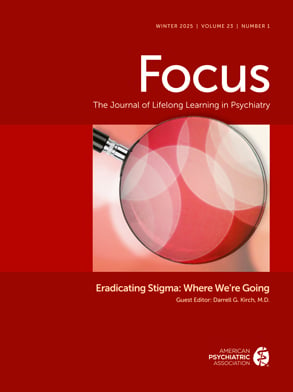Some limitations inherent the meta-analytic method must be acknowledged: problems in the randomization processes used in controlled trials, publication biases, variation of standard treatments over time and heterogeneity of studies (
39,
40). Second, ECT studies were in general heterogeneous for multiple aspects. For example, we did not take into account possible variations in the ECT techniques and procedures adopted in the various studies. In fact, most studies did not specify electrical parameters and type of equipment adopted. Furthermore, we did not discriminate between studies using unilateral ECT from those using bilateral ECT.
The reason why we did not distinguish between unilateral and bilateral ECT stays in some controversies regarding which of the 2 techniques is most efficient method of electrical induction of the ECT (
41–
43). Some studies pointed out that the efficacy of unilateral ECT is simply a question of adequate dosage levels; with high-dose unilateral ECT and bilateral ECT present equivalents response rate, with the advantage that unilateral ECT produces less anterograde and retrograde memory deficits (
44–
49).
Another consideration regarding the variation of standard treatments is the use of traditional ECT (constant-voltage modified sine-wave stimuli) or modern ECT (constant current brief-pulse). The physiological efficiency of the brief-pulse device is more optimal than the sine wave, but comparisons between the traditional sine-wave ECT and the bilateral suprathreshold modern ECT revealed that the clinical improvement were virtually identical for the 2 methods (
50–
52).
Another caveat for interpreting data on ECT, regards the diagnostic heterogeneity of samples used in the various studies, which included diagnoses such as neurotic depression (
22,
31,
53), depression with psychotic symptoms (
20,
22), melancholic depression (
29), treatment-resistant major depression (
28), and schizoaffective disorders, depressed type (
33–
36). There are contradictions in the analysis of the association of specific symptom profiles with ECT outcome. Early observational studies found that endogenous or melancholic depression were predictive of greater response to ECT than “neurotic depression”; however, subsequent trials did not reveal a difference in ECT response between patients with versus without melancholia (
54). A combined analysis of randomized controlled trials of ECT versus simulated ECT showed that real ECT had a therapeutic advantage, specifically among patients with delusions and/or retardation (
55). Nevertheless, in 2 randomized controlled trials, involving 143 patients, Sobin et al (
56) investigated the utility of depression subtypes in predicting ECT response and concluded that ECT is a treatment option for patients with major depression regardless of the presence of psychotic features, retardation and/or agitation. More responsible of the variation of results among studies on ECT can be, respectively, the different instruments used to measure the reduction of the depressive symptoms, the difficulties to maintain some research team blind to this therapeutic method, the number of ECT sessions applied and the methodological weakness of some studies that did not specify the electrical parameters of the bilateral ECT and/or unilateral ECT. Moreover, the proportion of patients who previously failed adequate antidepressant medication trials could impact on rates of response to ECT (
57–
59).
